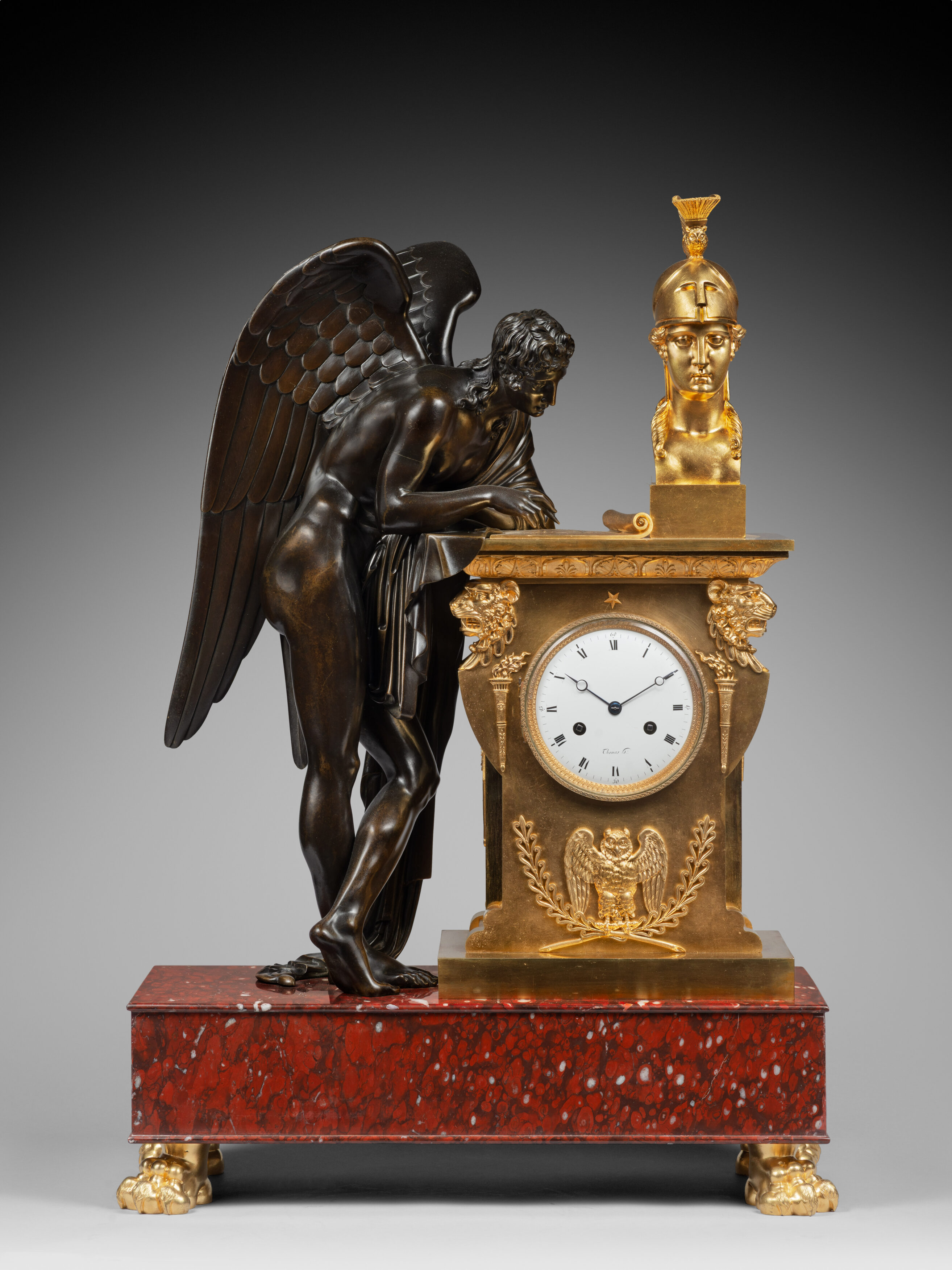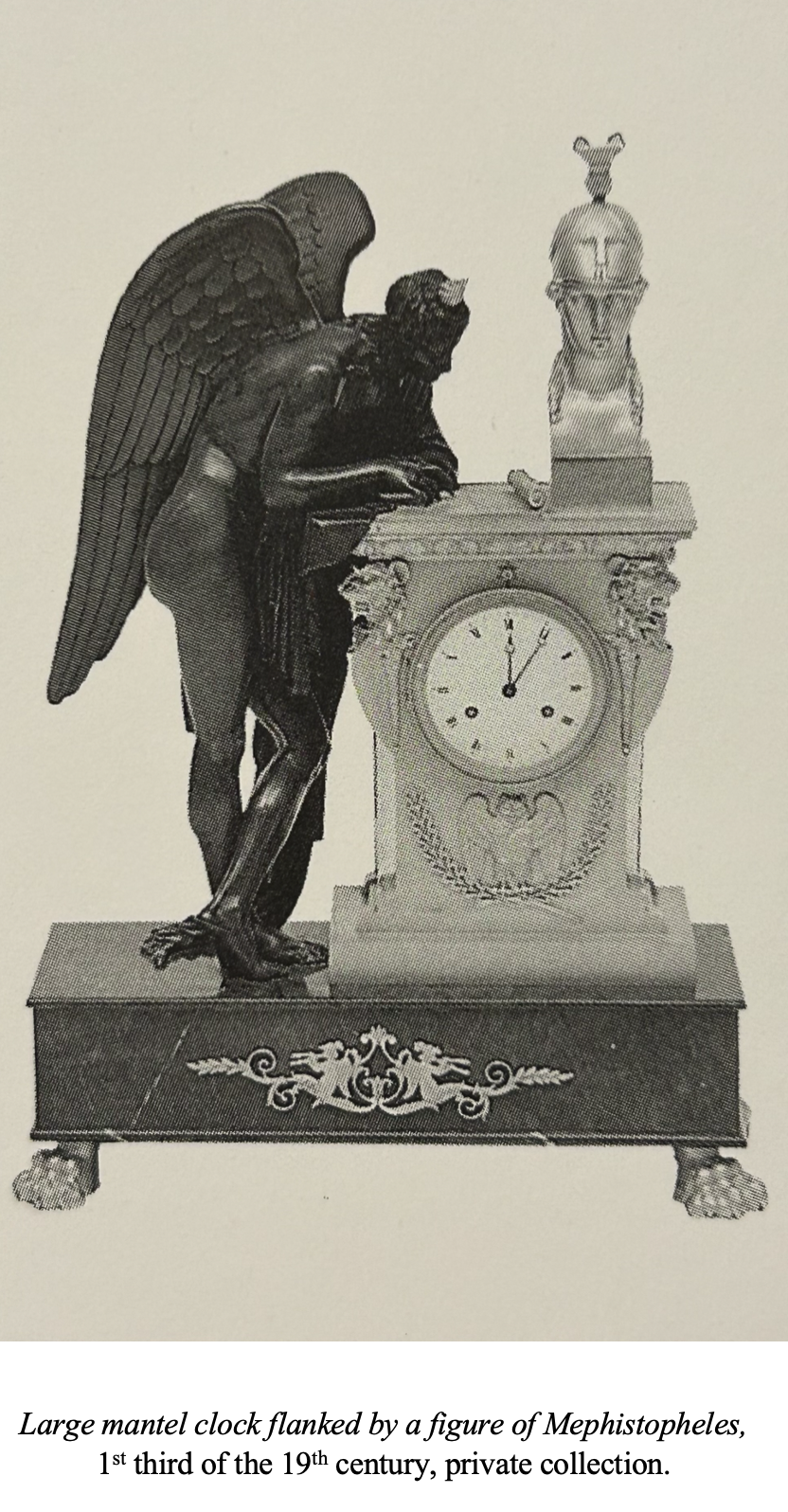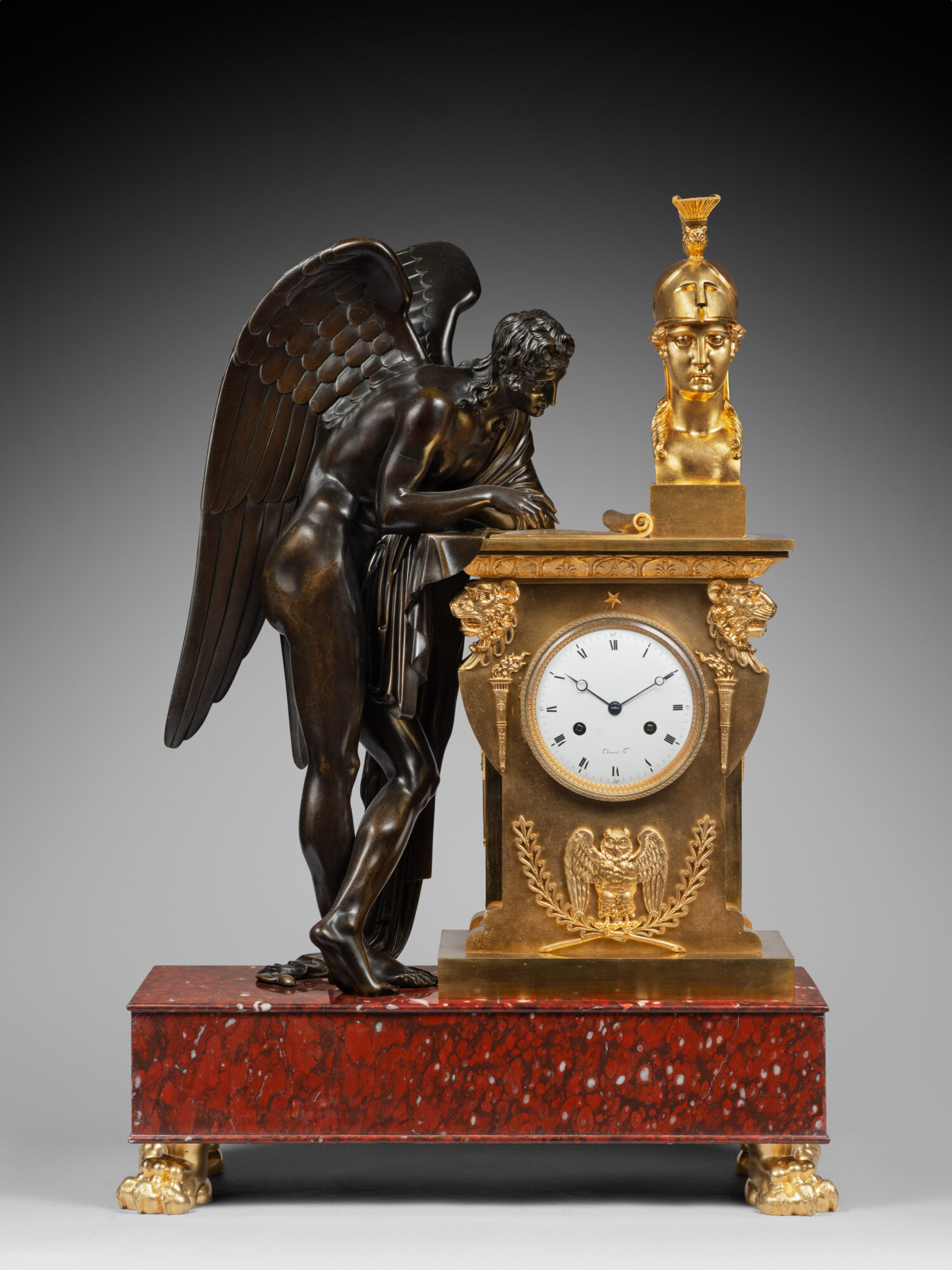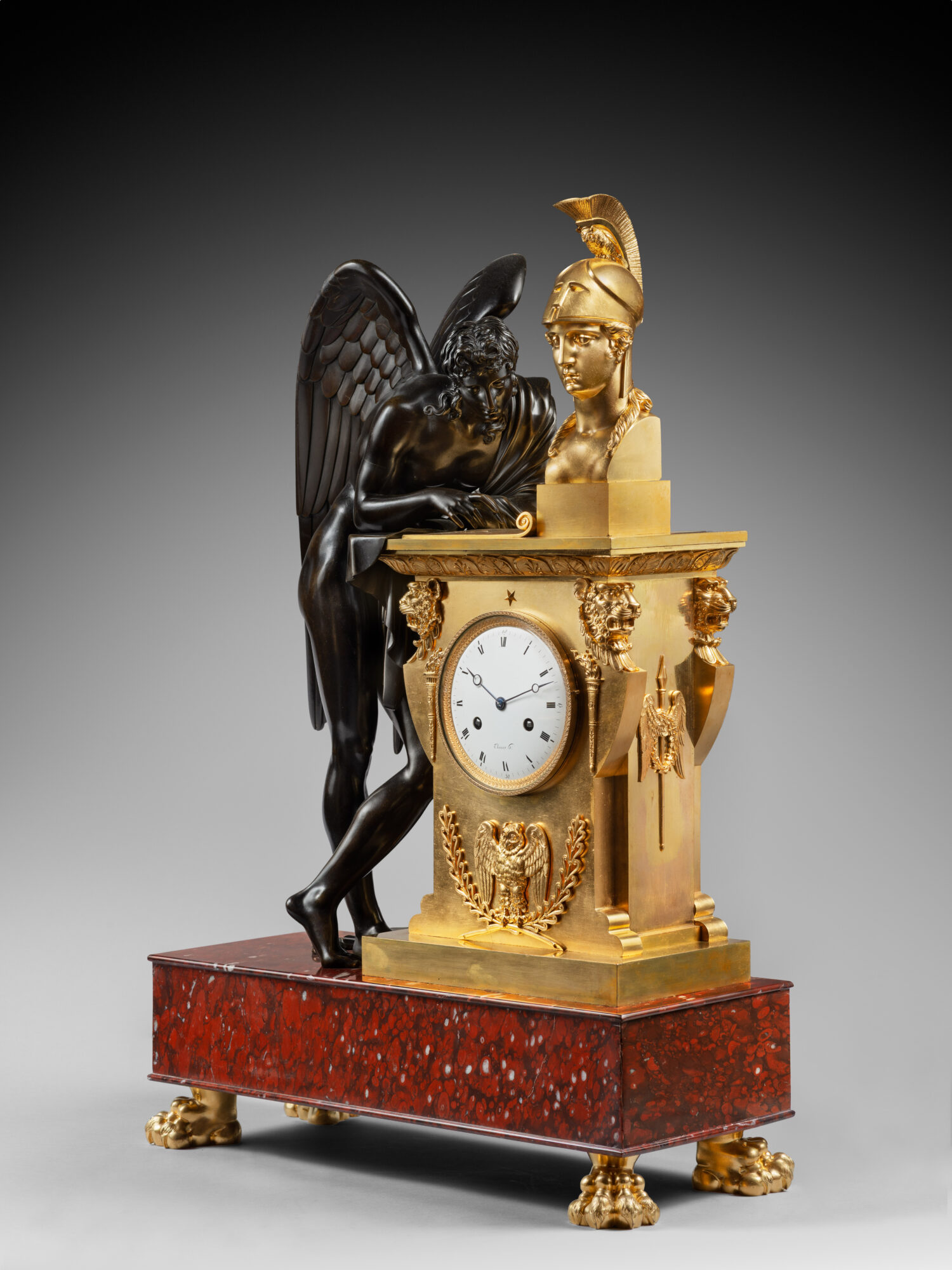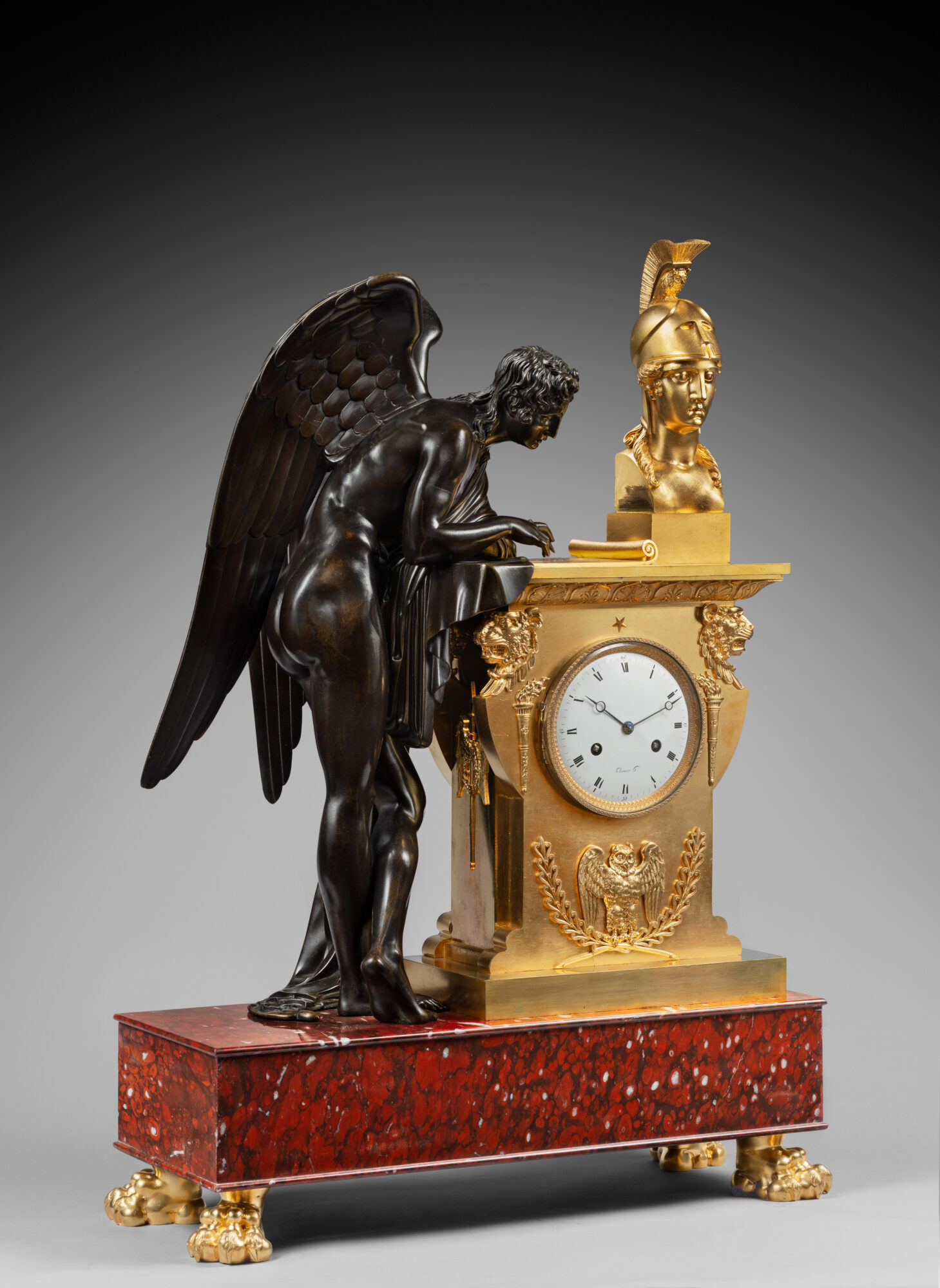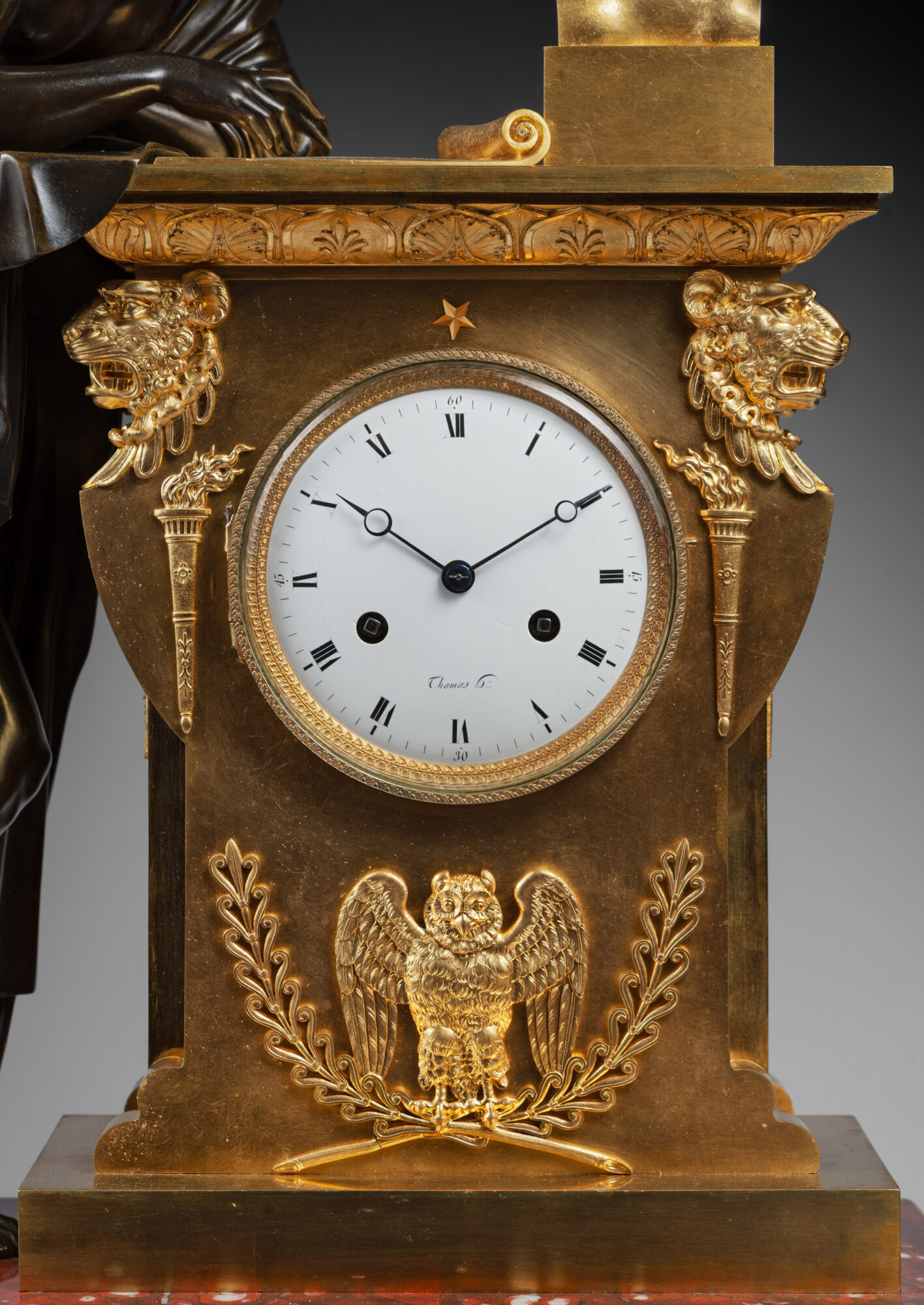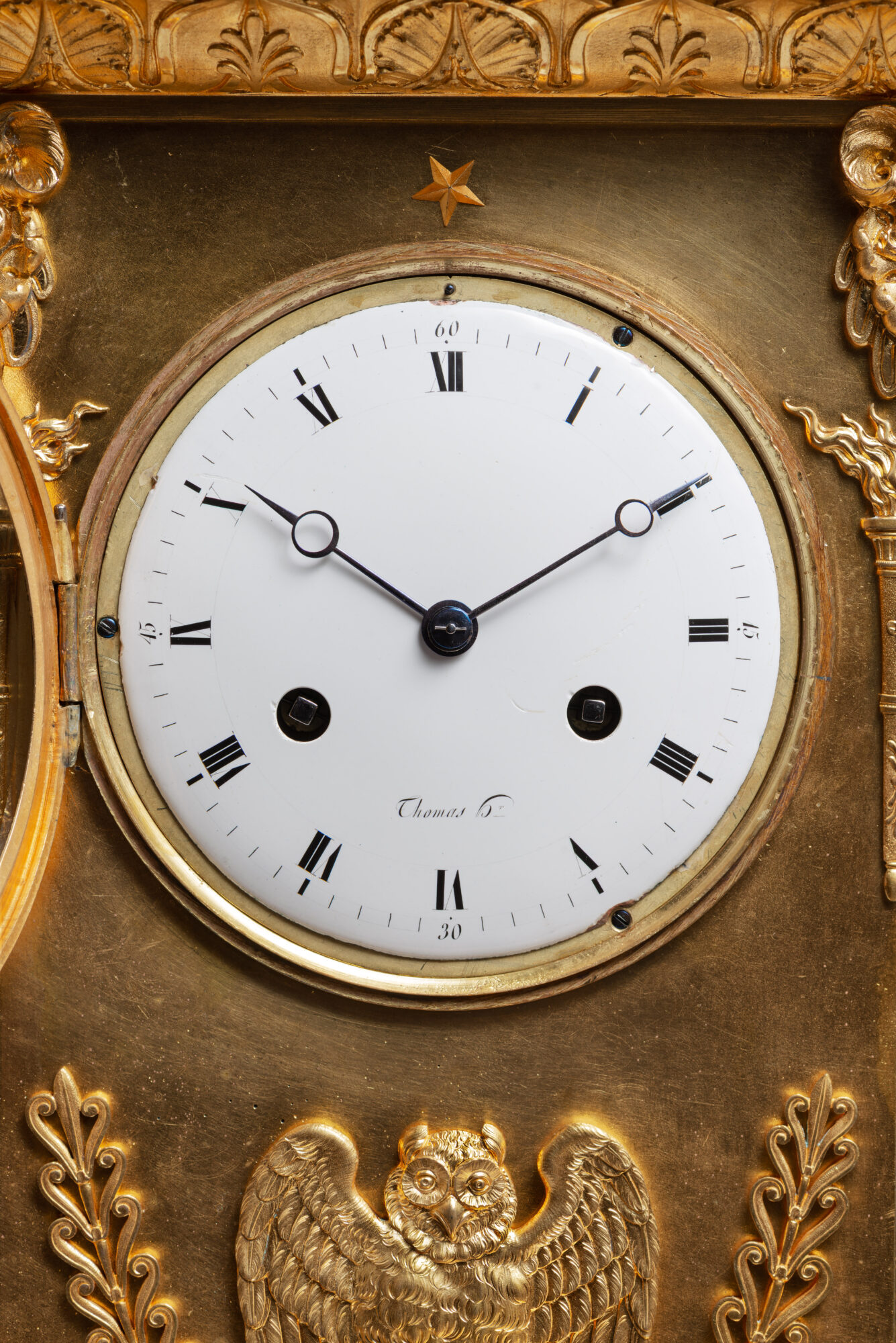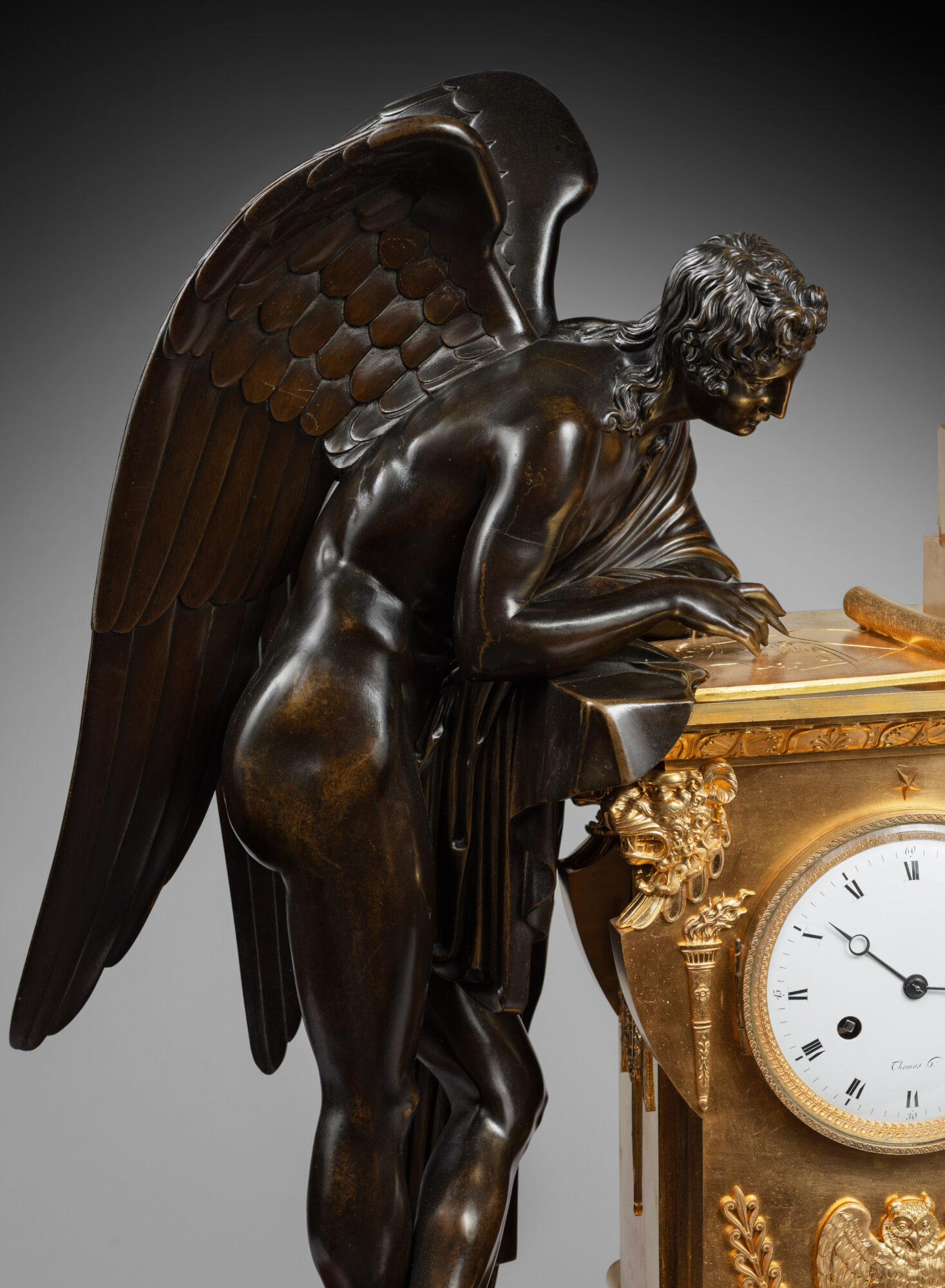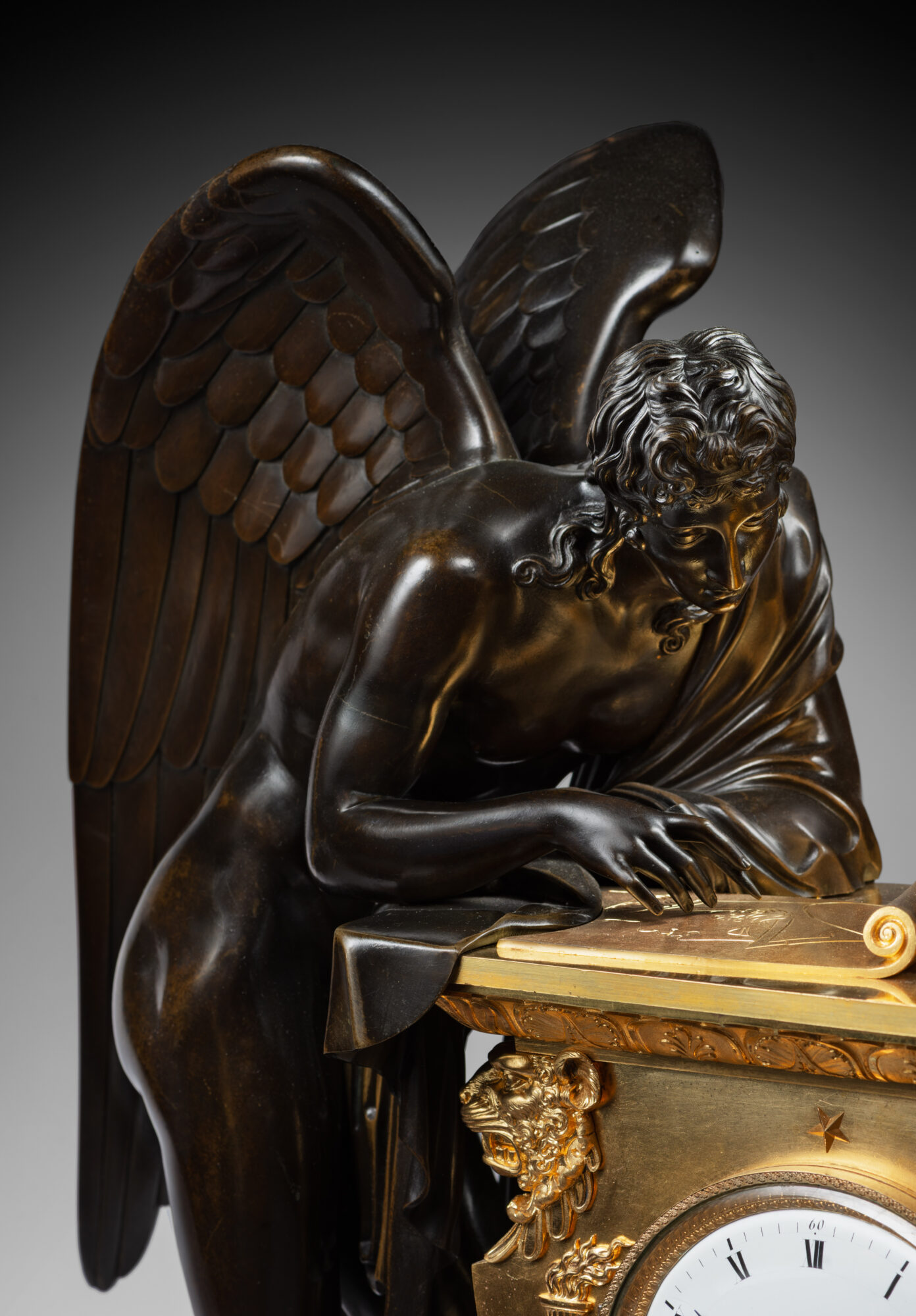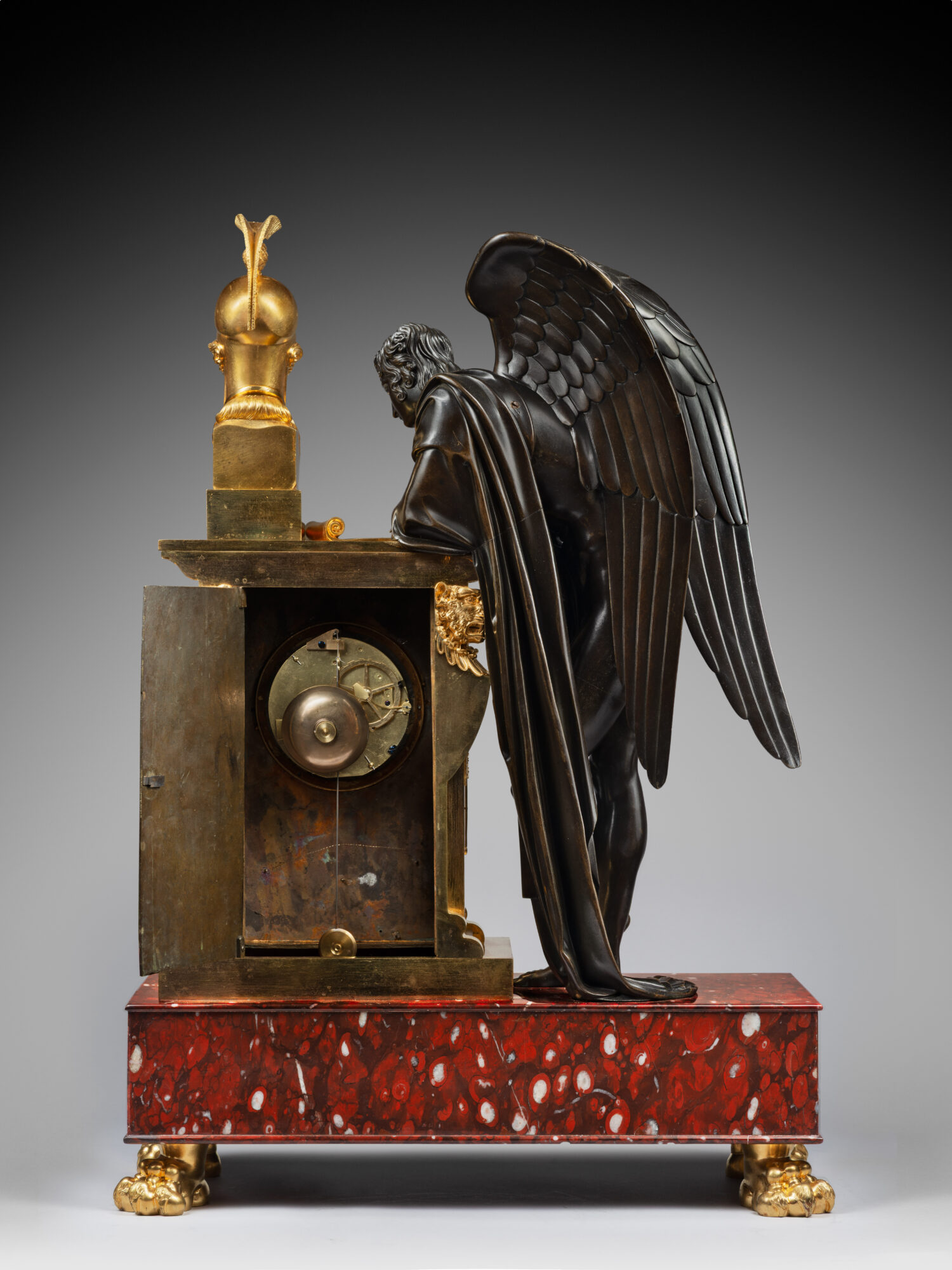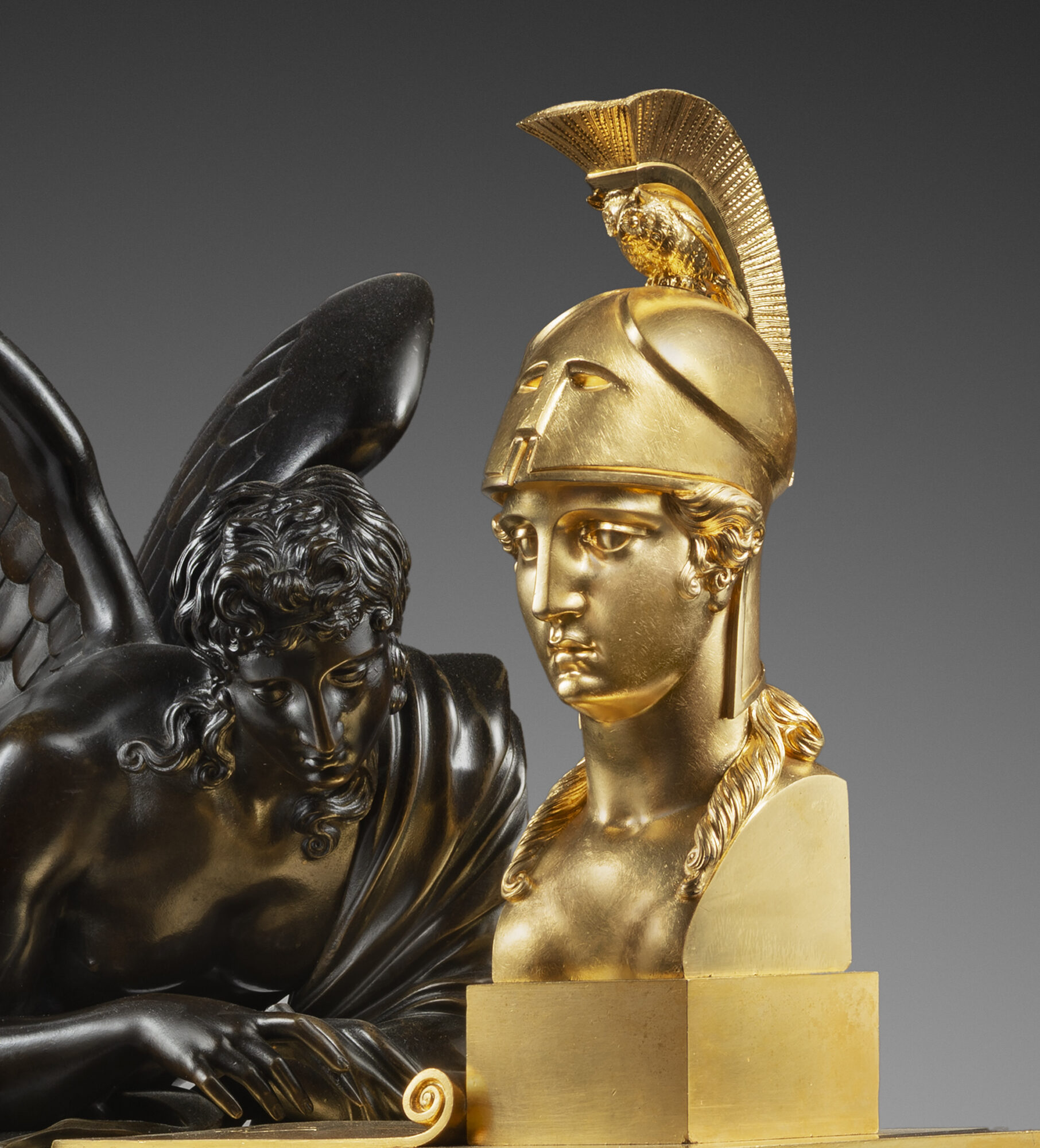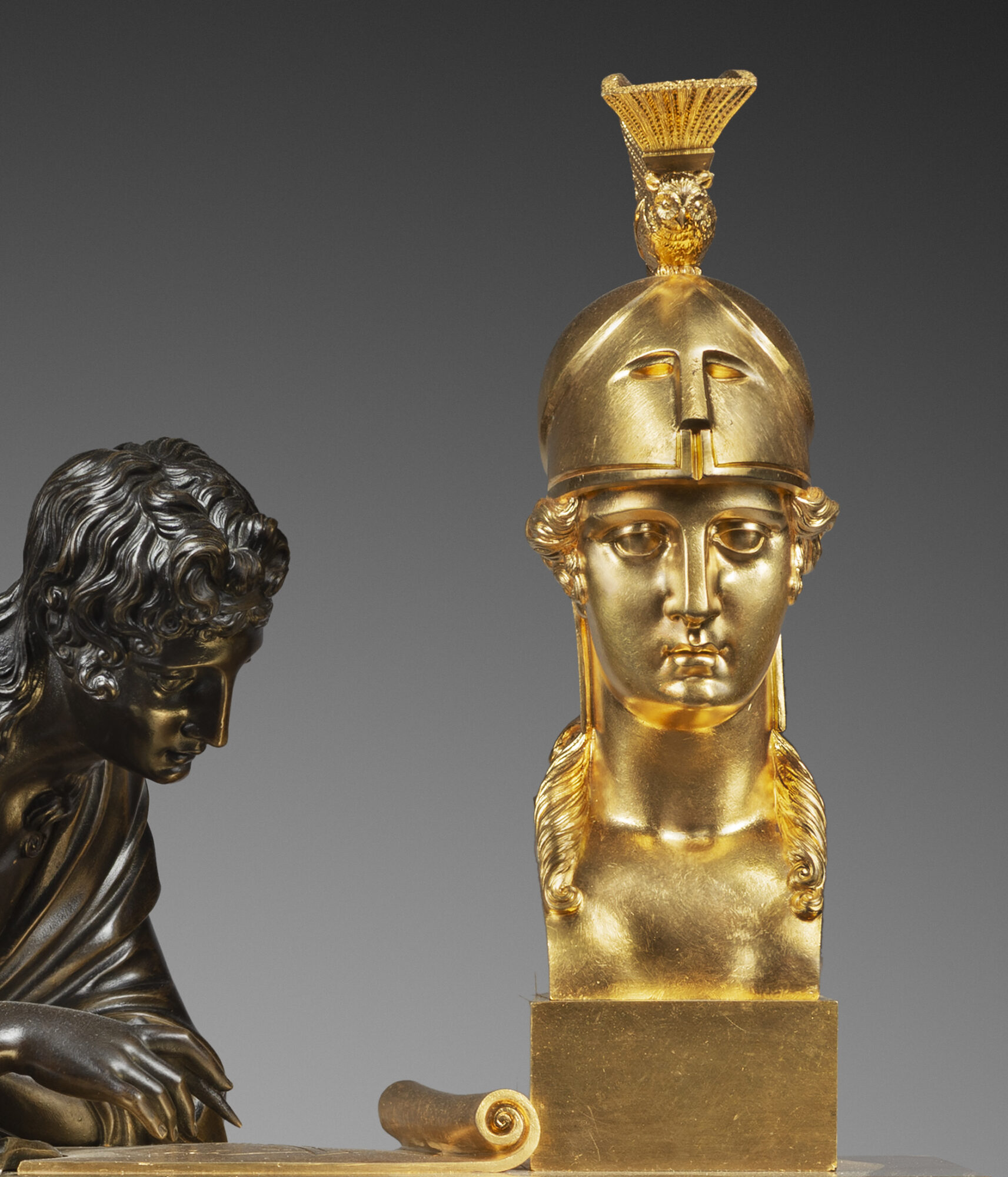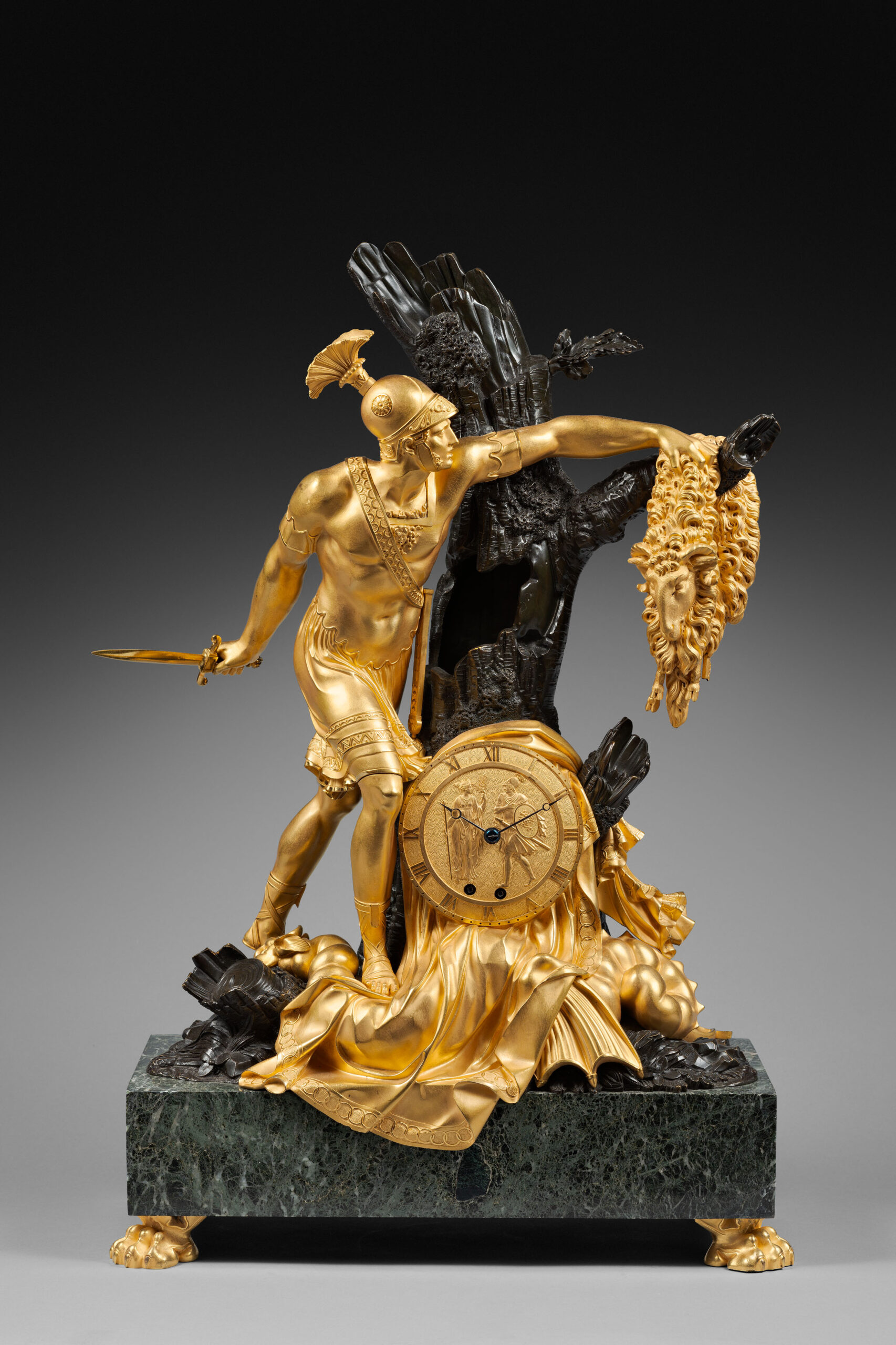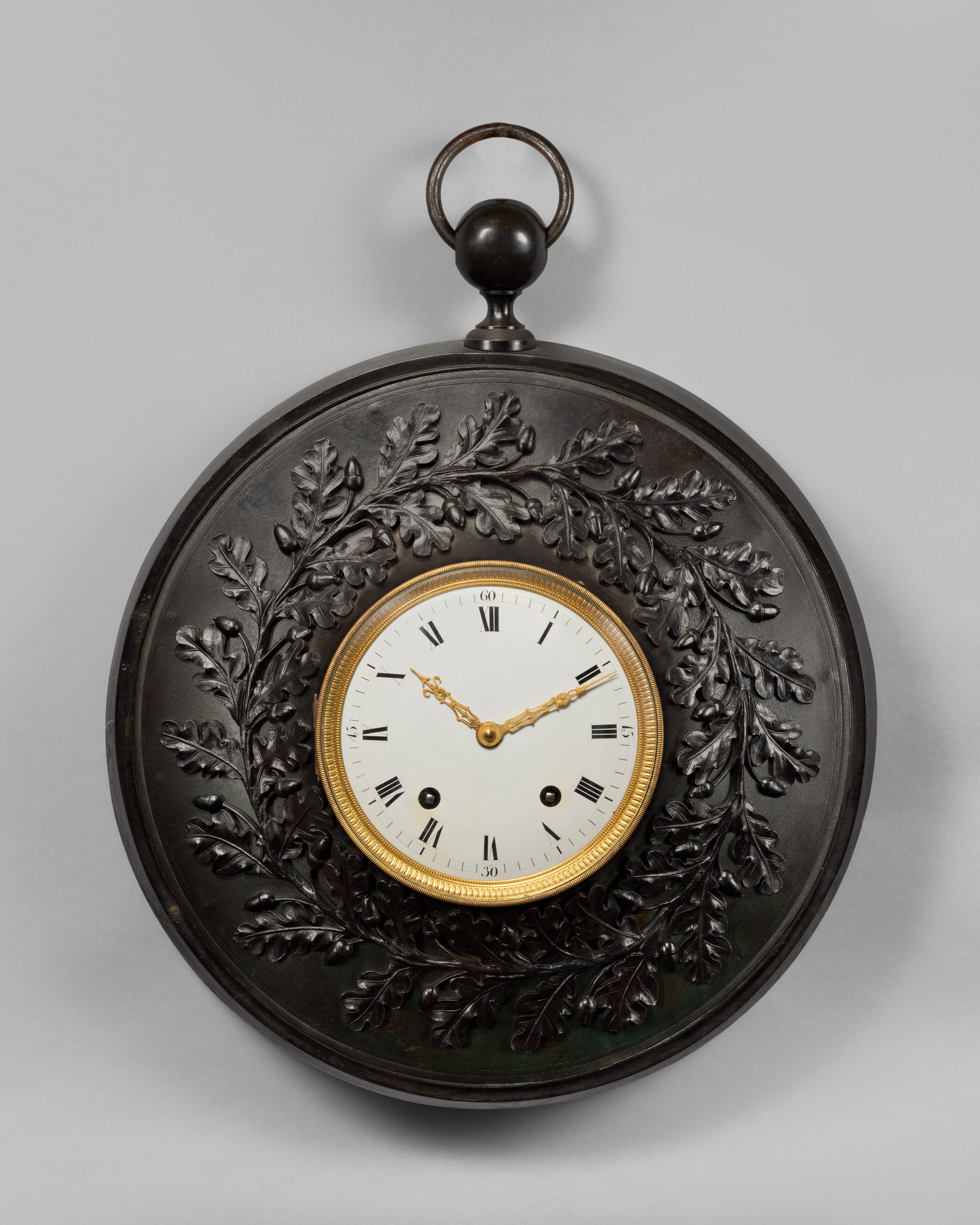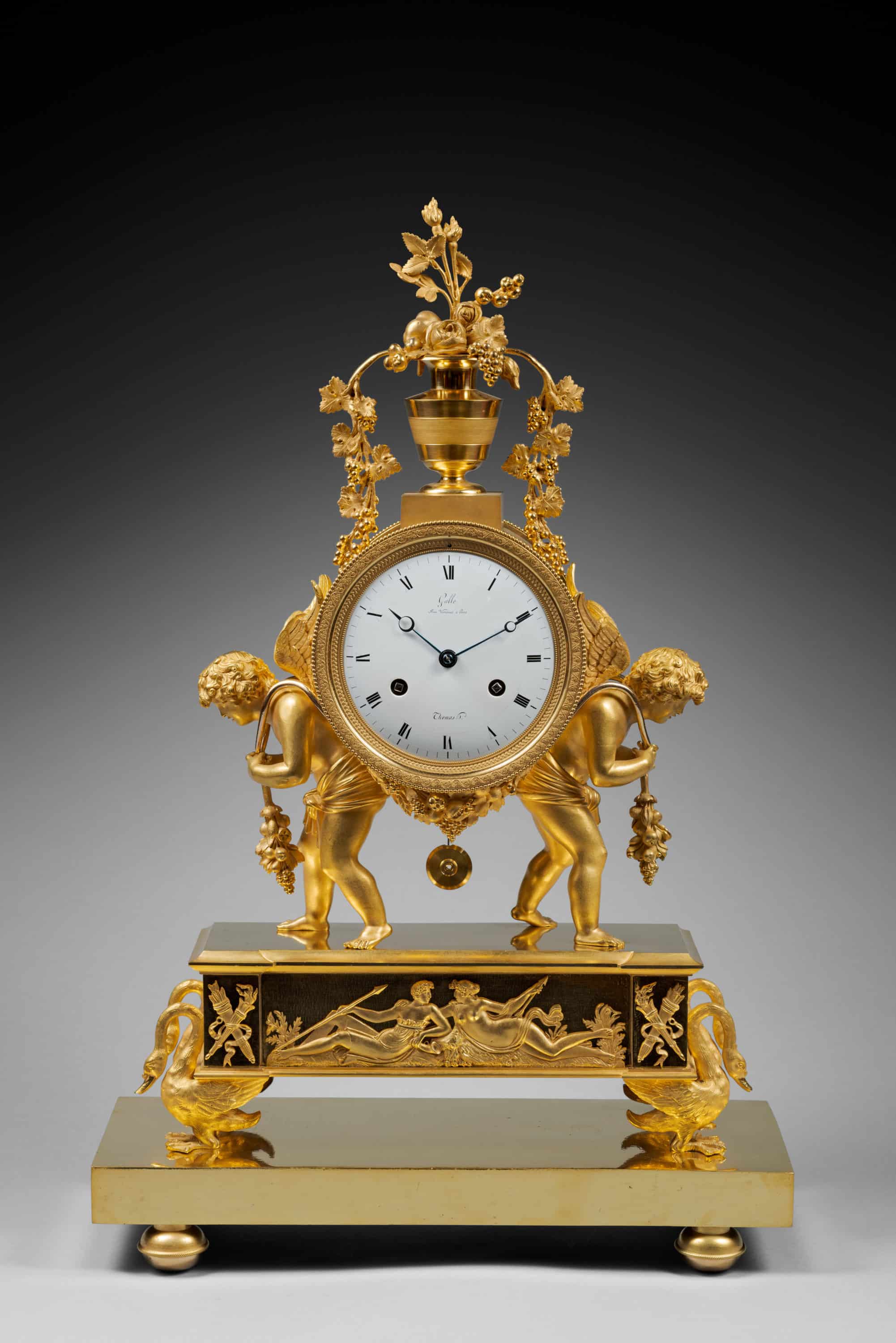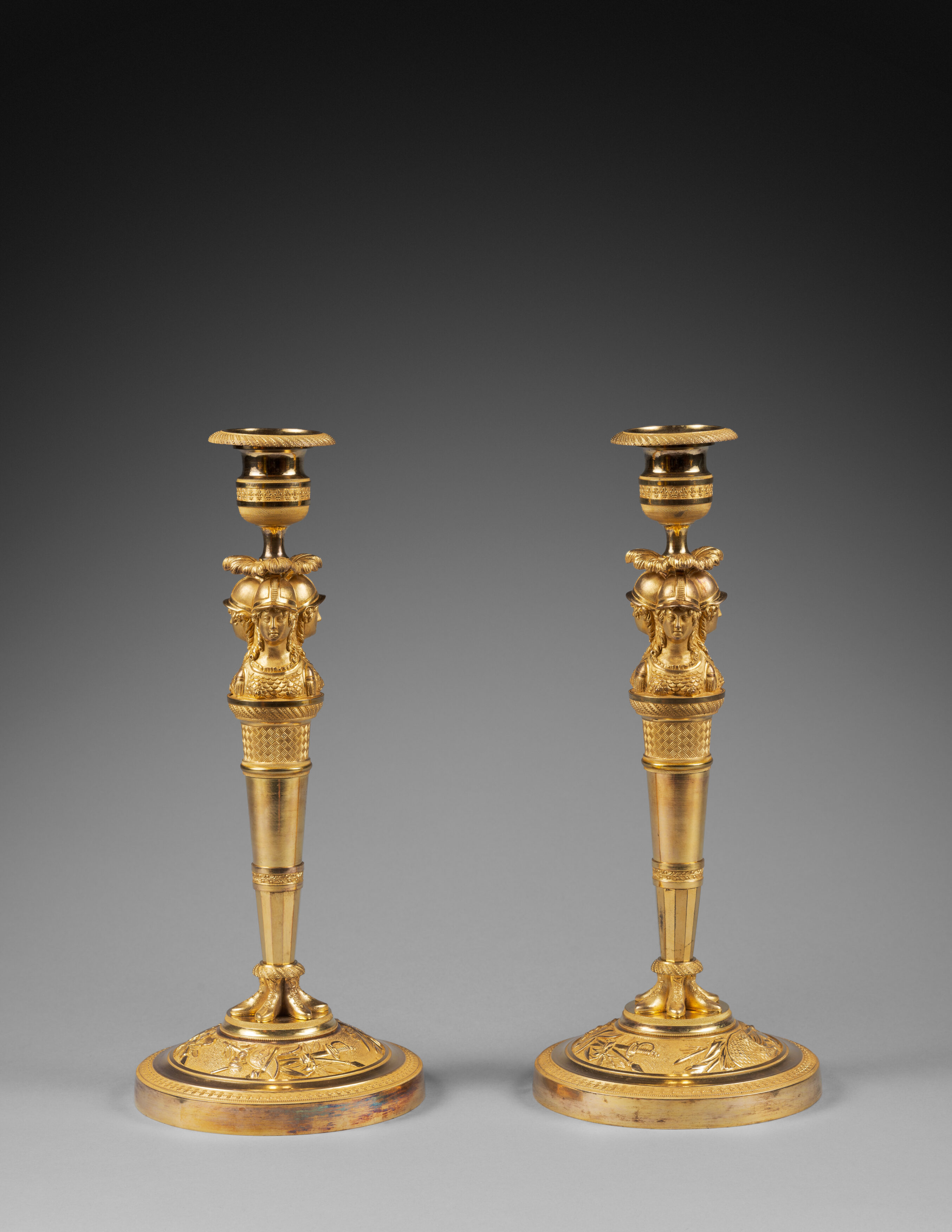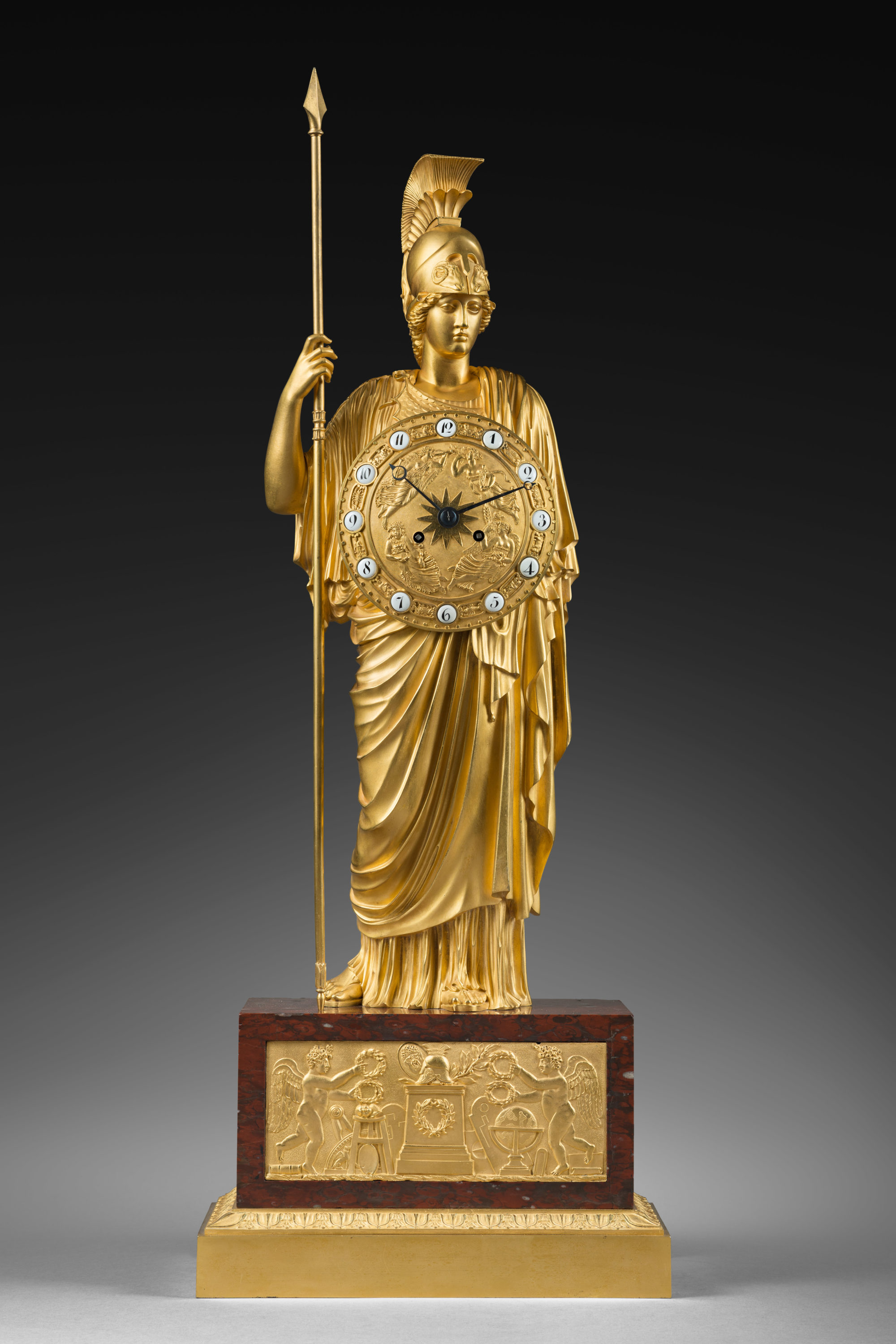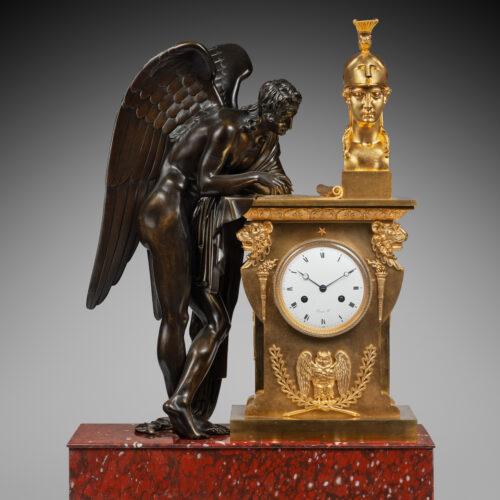Important Mantel Clock made of Rouge Griotte Marble, Patinated and Matte Gilt Bronze
“The Spirit of War Inspired by Athena”
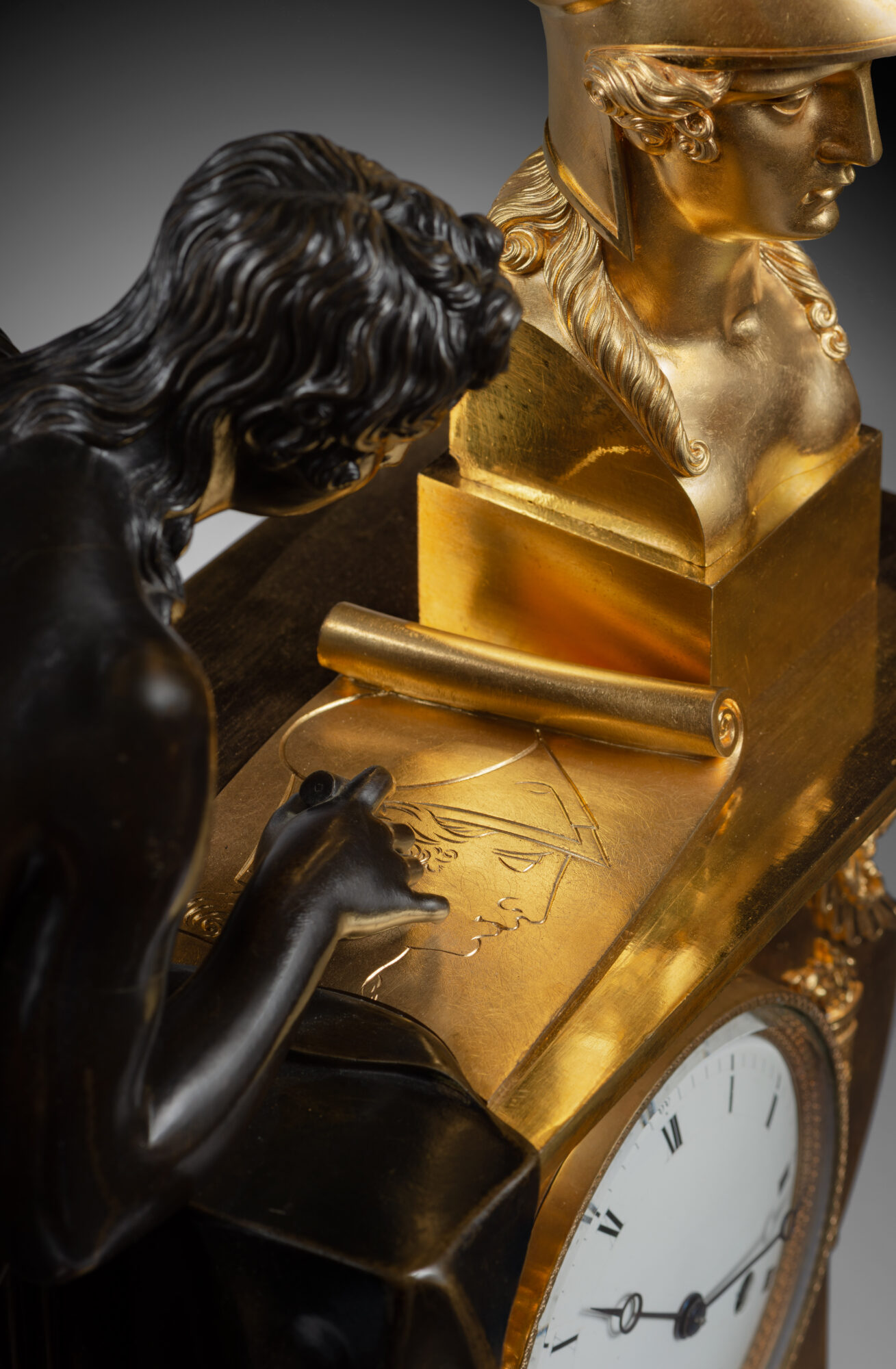
Dial signed “Thomas Hr” by clockmaker Thomas
Case attributed to master bronze-caster Claude Galle
Paris, early Empire period, circa 1805
The round white enamel dial, signed “Thomas Hr”, indicates the Roman numeral hours and the Arabic numeral fifteen-minute intervals by means of two blued steel Breguet hands. The hour and half hour striking movement is housed in a case of finely chased, patinated, and matte gilt bronze and red griotte marble. The bezel is decorated with knurled friezes. The mechanism is housed in a rectangular case that is adorned with motifs of flaming torches, winged spears, a star and an owl with outstretched wings. The sides feature terms with lions’ heads, forming consoles. The entablature, which is decorated with a frieze of alternating leaves, palmettes and stylized foliage, supports a bust of the helmeted Minerva and an unrolled parchment featuring the Spirit of War. It is represented by a magnificent winged male figure that is lightly draped and leans on the rectangular case. In his right hand he holds a stylus with which he is drawing the portrait of Athena. The quadrangular base rests on four lion’s paw feet.
The remarkable design of this important mantel clock, as well as the exceptional quality of its chasing, patina, and gilding, all showcase the talent of the bronze caster who made the case during the early years of the 19th century. This was very likely Claude Galle, one of the finest Parisian artisans of the day, to whom we attribute the case. The clock’s theme celebrates the goddess of Wisdom, Thought, and War. Her portrait is being drawn by the Spirit of War, and her wisdom and skills were a perfect illustration of the then widespread desire to glorify the characteristics of thought and action, which were shared by Napoleon himself. This is a rare model. One other identical clock is illustrated in P. Kjellberg, Encyclopédie de la pendule française du Moyen Age au XXe siècle, Les éditions de l’Amateur, Paris, 1997.
Claude Galle (1759 - 1815)
One of the foremost bronziers and fondeur-ciseleurs of the late Louis XVI and Empire periods, Claude Galle was born at Villepreux near Versailles. He served his apprenticeship in Paris under the fondeur Pierre Foy, and in 1784 married Foy’s daughter. In 1786 he became a maitre-fondeur. After the death of his father-in-law in 1788, Galle took over his workshop, soon turning it into one the finest, and employing approximately 400 craftsmen. Galle moved to Quai de la Monnaie (later Quai de l’Unité), and then in 1805 to 60 Rue Vivienne.
The Garde-Meuble de la Couronne, under the direction of sculptor Jean Hauré from 1786-88, entrusted him with many commissions. Galle collaborated with many excellent artisans, including Pierre-Philippe Thomire, and furnished the majority of the furnishing bronzes for the Château de Fontainebleau during the Empire. He received many other Imperial commissions, among them light fittings, figural clock cases, and vases for the palaces of Saint-Cloud, the Trianons, the Tuileries, Compiègne, and Rambouillet. He supplied several Italian palaces, such as Monte Cavallo, Rome and Stupinigi near Turin.
In spite of his success, and due in part to his generous and lavish lifestyle, as well as to the failure of certain of his clients (such as the Prince Joseph Bonaparte) to pay what they owed, Galle often found himself in financial difficulty. Galle’s business was continued by his son after his death by his son, Gérard-Jean Galle (1788-1846). Today his work may be found in the world’s most important museums and collections, those mentioned above, as well as the Musée National du Château de Malmaison, the Musée Marmottan in Paris, the Museo de Reloges at Jerez de la Frontera, the Residenz in Munich, and the Victoria and Albert Museum in London.
Discover our entire collection of rare clocks on La Pendulerie Paris.
This clockmaker, who signed “Thomas à Paris”, often worked with the bronze caster Claude Galle. This Parisian clockmaker was active during the latter part of the 18th century and the early years of the following century. Through Galle, Thomas became known to Parisian connoisseurs of fine and luxury horology. Some of his pieces were mentioned during the early decades of the 19th century as being in the homes of important collectors, including two Napoleonic Marshals, Michel Ney, Prince of the Moskva and Duke of Elchingen, and Louis-Alexandre Berthier, prince of Wagram. Others were cited in the posthumous inventory of the wife of Louis-Amable-Auguste-Ursule-Achille de Sparre.
